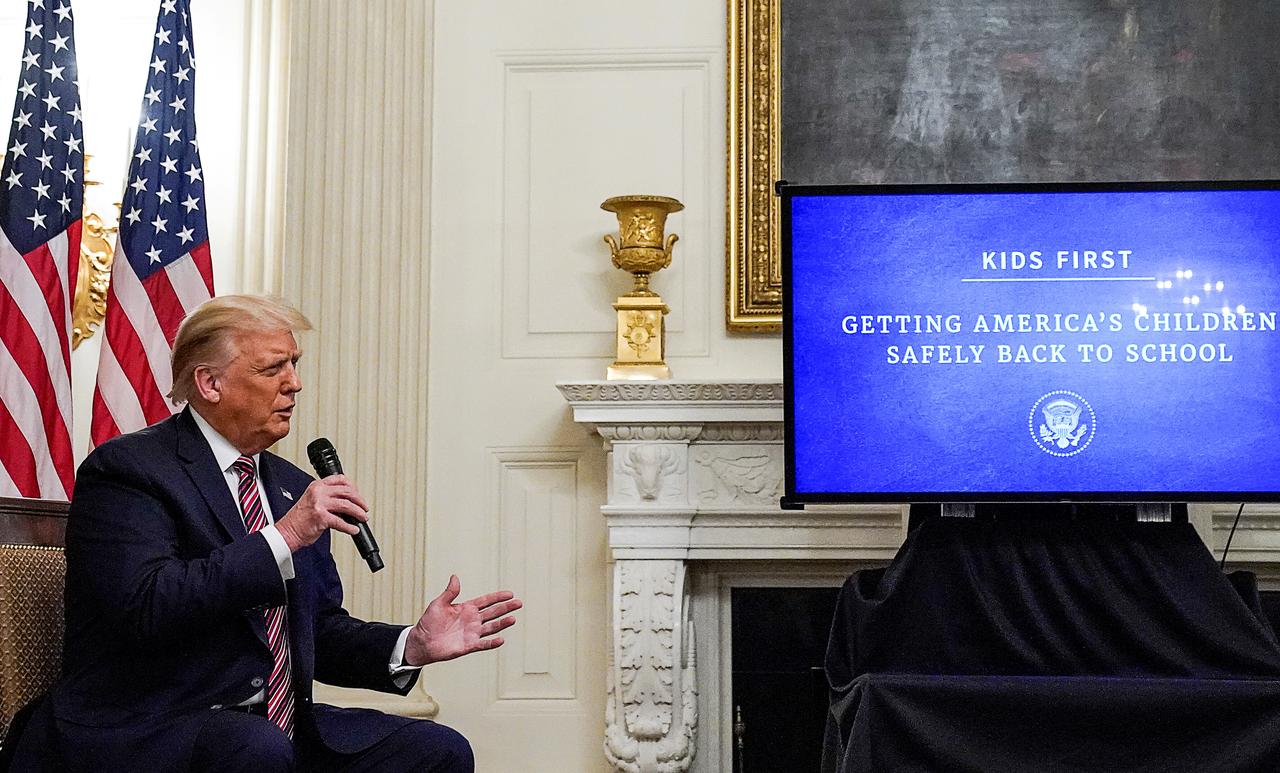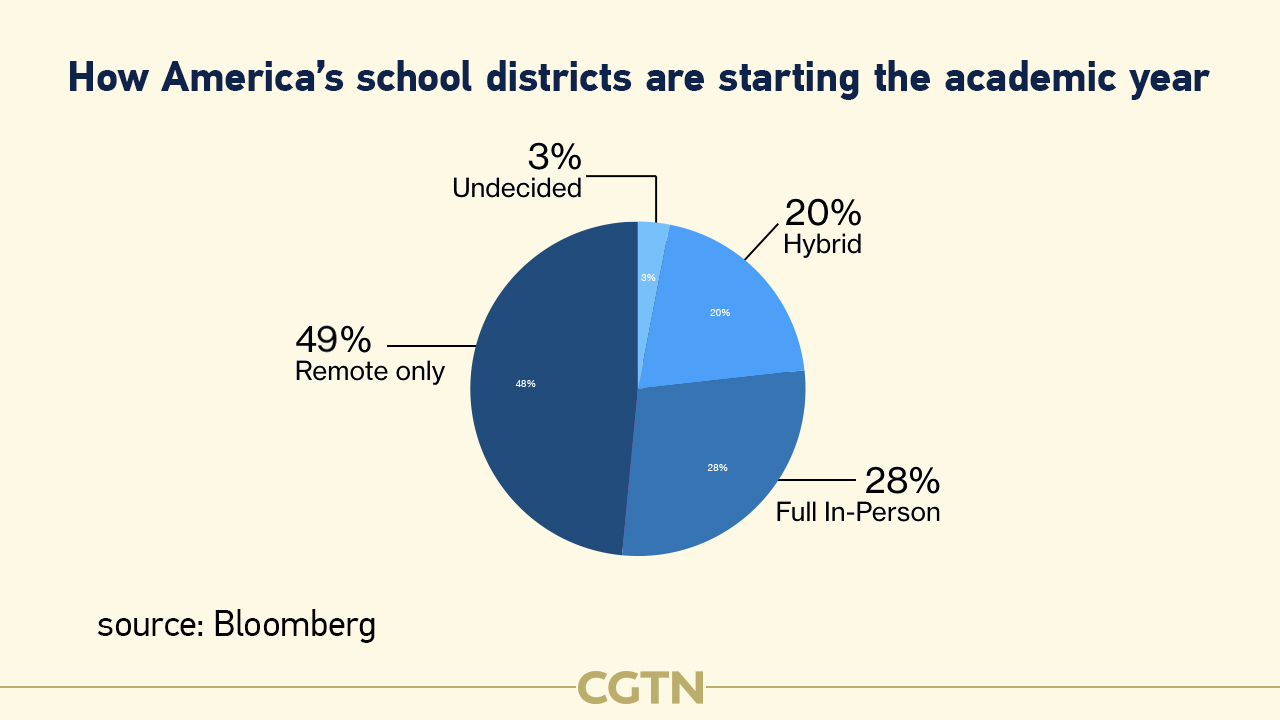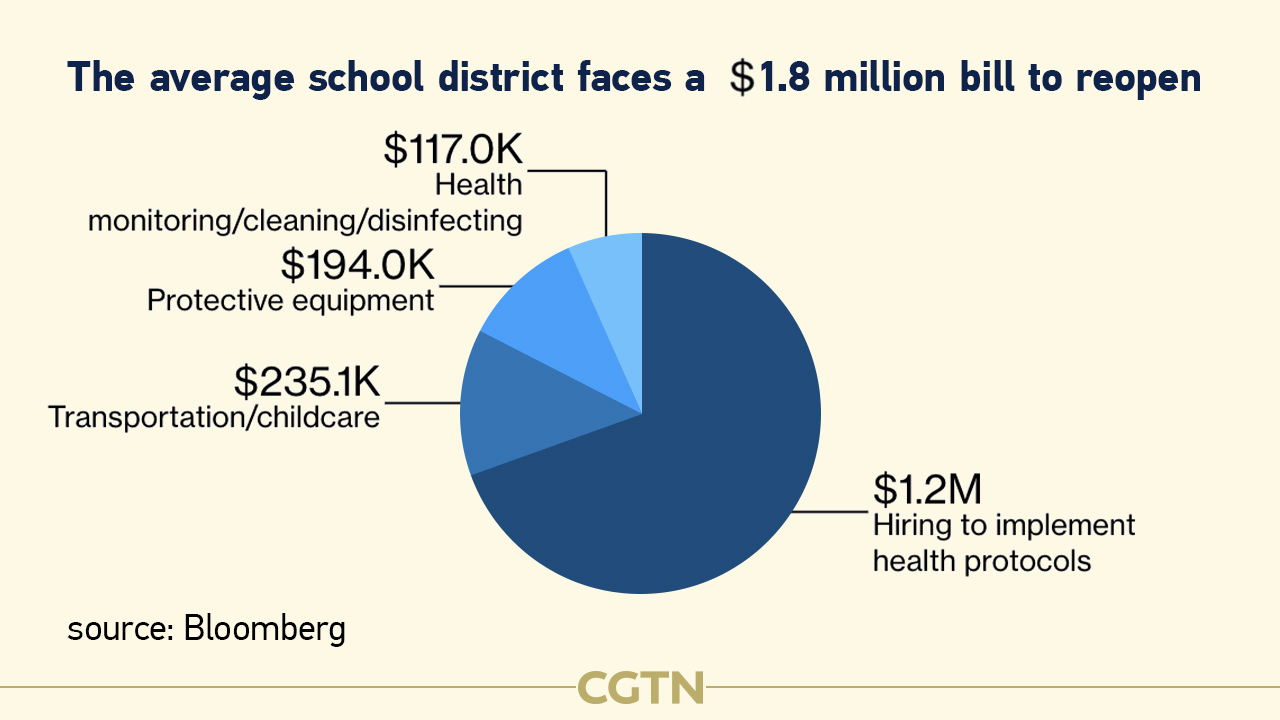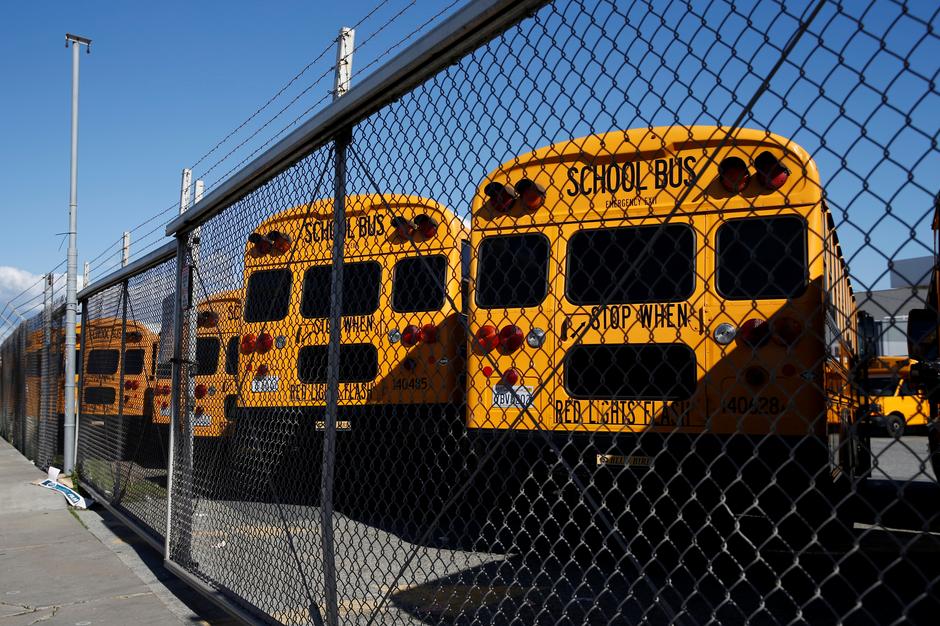
U.S. President Donald Trump speaks about reopening schools during a COVID-19 pandemic response event in the Eisenhower Executive Office Building Library at the White House in Washington, U.S., August 12, 2020. /Reuters
U.S. President Donald Trump speaks about reopening schools during a COVID-19 pandemic response event in the Eisenhower Executive Office Building Library at the White House in Washington, U.S., August 12, 2020. /Reuters
U.S. President Donald Trump is repeating his call for the nation's schools to reopen, and has again pressed Congress to steer future coronavirus funding away from schools that stay closed this fall.
Trump made the remarks on Wednesday at a White House discussion with parents, teachers and doctors who said they support a full return to the classroom.
Also joining Trump were Education Secretary Betsy DeVos and Vice President Mike Pence, who said the health risks tied to keeping children at home are greater than those associated with the coronavirus.
Trump has repeatedly pushed for schools to reopen, saying there are low risks to young people from the virus, even as teachers and public health experts have raised alarms about whether it could be done safely.
Fifty-nine percent of respondents oppose the call for schools and colleges to fully open, according to a new Politico/Morning Consult poll, up from 53 percent last month.
Even though children appear less likely to get infected than adults, and less likely to become seriously ill when they do, it means they could unknowingly pose a risk to other students and pass the virus on to their parents and grandparents, who might be vulnerable to severe illness if infected.

Bloomberg reported on Thursday that many schools that followed the president's advice to reopen fully are now seeing hundreds of students, staff and teachers put into quarantine. Despite Trump's efforts, most of the country's largest school districts have said they would start the school year with online classes.
Kelley Williams is superintendent of the Pontiac School District in Michigan, where the federal government contributes about 30 percent of the budget.
Williams plans for a hybrid start with both online and in-person classes. This is even if a full reopening would bring more federal cash, as Trump says funding for schools should be earmarked only for schools that reopen.
"We shut schools down back in March with just a few cases, and now we're up to thousands in some states," she says. "And we're talking about returning back to school at full capacity? That just makes no sense. That's setting us up for disaster."

Speaking at a White House briefing earlier on Wednesday, Trump released eight recommendations for reopening U.S. schools, including that masks be used when social distancing is not possible.
He said the federal government would provide 125 million reusable masks to school districts around the country.
"We got to open up. We got to open up our schools and open up our businesses," Trump told reporters at the briefing. "And a lot of it has been opened. But we can do better."
"Those advocating for a never-ending blanket nationwide lockdown have no answer for what it would do to the mental, physical and social health of millions of American children and people," Trump said.
As Congress negotiates a new round of virus relief, Trump has said school funding should go to parents if their local schools do not reopen for in-person instruction. He said Wednesday that he wants money to follow students, while Democrats want it to follow unions.
DeVos, a longtime proponent of school choice, added her support for Trump's proposal. She says families need "options that are going to work for their child and their child's education."

School buses are seen parked at First Student Charter Bus Rental as the spread of COVID-19 continues in San Francisco, California, U.S. April 7, 2020. /Reuters
School buses are seen parked at First Student Charter Bus Rental as the spread of COVID-19 continues in San Francisco, California, U.S. April 7, 2020. /Reuters
Opinion polls have found that support for full-time, in-person schooling has dropped as the pandemic has dragged on, though Republicans are significantly more likely to back students' return to classrooms full-time in the fall than Democrats are.
The latest study found that the number of new COVID-19 cases among children in the United States rose 40 percent in the last two weeks of July.
The new report released earlier this week by the American Academy of Pediatrics and the Children's Hospital Association found that more than 338,000 children have tested positive for COVID-19 since the onset of the U.S. epidemic, with 97,078 new cases reported in the July 16-30 period.
Most of the new infections in this group occurred in states in the U.S. South and West, according to the report, which was based on data from 49 states, New York City, the District of Columbia, Puerto Rico and Guam.
But it did not give a reason for the recent spike.
(With input from AP, Reuters)